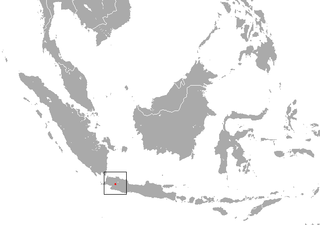
The lentil is an edible legume. It is an annual plant known for its lens-shaped seeds. It is about 40 cm (16 in) tall, and the seeds grow in pods, usually with two seeds in each. As a food crop, the majority of world production comes from Canada and India, producing 58% combined of the world total.

Hornets are the largest of the eusocial wasps, and are similar in appearance to their close relatives yellowjackets. Some species can reach up to 5.5 cm (2.2 in) in length. They are distinguished from other vespine wasps by the relatively large top margin of the head and by the rounded segment of the abdomen just behind the waist. Worldwide, 22 species of Vespa are recognized. Most species only occur in the tropics of Asia, though the European hornet, is widely distributed throughout Europe, Russia, North America, and Northeast Asia. Wasps native to North America in the genus Dolichovespula are commonly referred to as hornets, but are actually yellowjackets.

The mouflon is a wild sheep native to the Caspian region from eastern Turkey, Armenia, Azerbaijan to Iran. It is thought to be the ancestor of all modern domestic sheep breeds.

Hyacinthus is a small genus of bulbous, spring-blooming perennials. They are fragrant flowering plants in the family Asparagaceae, subfamily Scilloideae and are commonly called hyacinths. The genus is native to the area of the eastern Mediterranean from the north of Bulgaria through to the northern part of the region of Palestine.

Platycladus is a monotypic genus of evergreen coniferous trees in the cypress family Cupressaceae, containing only one species, Platycladus orientalis, also known as Chinese thuja, Oriental arborvitae, Chinese arborvitae, biota or Oriental thuja. It is native to northeastern parts of East Asia and North Asia, but is also now naturalised as an introduced species in other regions of the Asian continent.

Synaxarion or Synexarion is the name given in the Eastern Orthodox, Oriental Orthodox and Eastern Catholic Churches to a compilation of hagiographies corresponding roughly to the martyrology of the Roman Church.

Fagus orientalis, commonly known as the Oriental beech, is a deciduous tree in the beech family Fagaceae. It is native to Eurasia, in Eastern Europe and Western Asia.

Quaesitosaurus is a genus of nemegtosaurid sauropod containing only the type species, Q. orientalis, described by Kurzanov and Bannikov in 1983. It lived from 85 to 70 million years ago during the Late Cretaceous. Its fossils, consisting solely of a partial skull, were found in the Barun Goyot Formation near Shar Tsav, Mongolia. With long, low and horse-like with frontally located peg-teeth, the skull of Quaesitosaurus is similar enough to the skull of Diplodocus and its kin to have prompted informed speculation that the missing body was formed like those of diplodocids.

The Oriental dollarbird is a bird of the roller family, so named because of the distinctive pale blue or white, coin-shaped spots on its wings. It can be found from Australia to Korea, Japan and India.

Thenus orientalis is a species of slipper lobster from the Indian and Pacific oceans.

Theileria is a genus of parasites that belongs to the phylum Apicomplexa, and is closely related to Plasmodium. Two Theileria species, T. annulata and T. parva, are important cattle parasites. T. annulata causes tropical theileriosis and T. parva causes East Coast fever. Theileria species are transmitted by ticks. The genomes of T. orientalis Shintoku, Theileria equi WA, Theileria annulata Ankara and Theileria parva Muguga have been sequenced and published.

The greater Egyptian jerboa is a species of rodent in the family Dipodidae. It is found in Algeria, Egypt, Libya, Morocco, Saudi Arabia, Tunisia, and is possibly extinct in the Negev Desert of Israel. Its natural habitats are subtropical or tropical dry shrubland, sandy shores, and arable land.

The Oriental shrew is a species of mammal in the family Soricidae. It is endemic to Indonesia. It is threatened by habitat loss.
Azatrephes is a genus of moths in the family Erebidae erected by George Hampson in 1905.
Pentti Aalto was a Finnish linguist who was the University of Helsinki Docent of Comparative Linguistics 1958–1980. Aalto was a student of G. J. Ramstedt. He defended his doctoral dissertation in 1949 in Helsinki.

Trema orientalis is a species of flowering tree in the hemp family, Cannabaceae. It is known by many common names, including charcoal-tree, Indian charcoal-tree, pigeon wood, Oriental trema, and in Hawaii, where it has become naturalized, gunpowder tree, or nalita. It has a near universal distribution in tropical and warm temperate parts of the Old World, with a range extending from South Africa, through the Middle East, the Indian subcontinent and southern China to Southeast Asia and Australia.

The Amur leopard is a leopard subspecies native to the Primorye region of southeastern Russia and northern China. It is listed as Critically Endangered on the IUCN Red List. In 2007, only 19–26 wild leopards were estimated to survive in southeastern Russia and northeastern China. It was considered as one of the rarest cats on Earth.
Azatrephes discalis is a moth of the subfamily Arctiinae first described by Francis Walker in 1856. It is found in French Guiana and Brazil.
Azatrephes fuliginosa is a moth of the family Erebidae first described by Walter Rothschild in 1910. It is found in Brazil.
Azatrephes paradisea is a moth of the subfamily Arctiinae first described by Arthur Gardiner Butler in 1877. It is found in Brazil and French Guiana.














